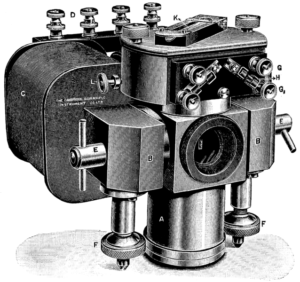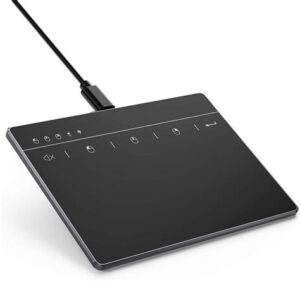Stereographs are really effective at observing the small details of an image that I might otherwise miss. I never had an interest in them until I slowed down and looked through a series of photographs of different minorities laboring in the fields. Certain parts of the image felt more solidified, or calcified looking through the stereoscope versus looking with the naked eye. The photograph almost became a sculpture to me. I’m not necessarily interested in using a stereoscope, but I would be interested in exploring this idea with various lenses and playing with the sense of sight more abstractly.
Below is a link to Keystone View Company – A Pennsylvania based company that holds a large archive of curious imagery available to the public
Their blog – https://stereoscopy.blog/2021/01/03/keystone-view-company/
Archives – https://archives.lib.utrgv.edu/repositories/2/resources/427
Category: LookingOutwards01
Outwards from June – Report 1
Outwards from June – Report 1: Intriguing Capture Device – Consider the Oscilloscope

A few weeks ago, I learned about Oscilloscopes, (I think I had heard about them years before in a physics class, but at that time quickly forgot about them). Technically, they are electronic test instruments that display voltage variation over time. Oscilloscopes capture variation in electric signals using various methods (which could be a post for another time). Oscilloscopes are useful in many different situations as tools that help people understand how electric signals are changing – people use oscilloscopes for troubleshooting automotive systems or even to display heartbeats as electrocardiograms.


My personal interest in oscilloscopes is related to visualizing sound waves, ‘sound’ being famously hard to ‘see,’ besides the fact that human ears, or auditory receptors, are not attuned to perceive all the sounds, or rather, vibrations that exist in our surroundings.

I really enjoy the idea of finding ways of translating sounds and vibrations into something visual. Of course, we have ways of perceiving vibrations, but it’s interesting to use a tool so that we can get another perspective or vantage point on that better illuminates how those vibrations behave. How might oscilloscopes be more effective? What the creators of the oscilloscope got right is that it’s an amazing analytical tool both to tune and troubleshoot with – I think it’s underexplored potential is as a creative tool. I was reading about William Duddell, who’s credited as the inventor of ‘the moving coil oscillograph’, which is a precursor to the oscilloscope. Apparently little William was some kind of prodigy who at only 4 years old transformed a toy mouse into an automaton by embedding clockwork within it. Duddell also is one of the first people to have created electronic music, using a device called the ‘singing arc,’ one of the first electronic oscillators. Duddell used his oscillograph creatively to play God Save the Queen and in doing so demonstrated that he could use his oscillograph to determine the precise conditions required to produce oscillations (and produce them in the sequence of a tune by wiring them to a keyboard). Some of the motivations for Duddell in making his oscillograph are linked to the fact that arc lamps which lit the streets made ‘audible humming, hissing, or even howling sounds,’ which was not ideal, so measuring the instability in their current was helpful and Duddell’s oscilloscope could do just that.

I became interested in visualizing sound recently, after being captivated by a passage in the book When We Cease to Understand the World by Benjamin Labatut. In it, there’s a mention of Johannes Keplerwho believed that there’s a melody produced by planets in motion around the sun. He called it the music of the spheres and thought that though human ears couldn’t hear this music, the human mind would be able to understand it. I thought the idea of the cosmic music of the spheres was so beautiful that I investigated it further and found that tons of artists and musicians have referenced it. One of my favorite passages is from a Lovecraft story — “His ears seemed at times to catch a faint, elusive susurrus which could not quite be identified with the nocturnal hum of the squalid streets outside, and he thought of vague, irrelevant things like the music of the spheres and the unknown, inaccessible life of alien dimensions pressing on our own.”
I’ll leave this at that for now!
P.S. please forgive me for violating the new media rules of the ‘looking outwards’ report as I have technically seen this tool before, but it was only a few weeks ago and I’ve been very interested in it since and have wanted to share it with people who it might also inspire (maybe we can someday work on a project together!)
Looking Outwards 1
I really like the EMF sonifier. Although when I searched online the most similar results were “EMF amplifiers”. It basically senses the electromagnetic fields created by different voltages and electrical currents, and outputs a sound corresponding to the frequencies. It’s a great way to acutely experience how much of our lives are surrounded by invisible currents flowing around. I’m thinking of combining the sound experience with visualizations of the currents, and possibly re-recording the audio from EMF sonifiers with the binaural mic to make it a much more lived and intimate experience. (The robot arm is cool so I have it here but I’m thinking more of site-based recordings in different types of locations).



Looking Outwards #1-Paragraphica
Paragraphica is an innovative camera that utilizes AI and location data to generate a photographic representation of a place and moment based on descriptive text. It gathers data such as the address, weather, and nearby places to create a paragraph that encapsulates the current environment, which is then converted into a unique image using a text-to-image API. The camera includes dials that allow users to control the radius of data collection, the noise in the AI’s image generation, and how closely the image follows the descriptive paragraph. This project’s use of AI with direct, real-time interaction with environments is what I find so inspiring. What I think the creators got right here is there ability to capture and enhance the visuals of real environments and in real-time. I think the creators could take it a step further by allows users to adjust the descriptive text that is used to generate the image, it would be even cooler if you gave the user liberty to image their space in a new way, in real-time. I also think it could be cool to make a similar technology that had a more specific transformation step, i.e. used the AI to enhance the image in a specific way rather than a general recreation of the photo. The image produced is limited by the descriptive text that is generated.
Related Technologies: Paragraphica was created with Raspberry Pi 4, 15-inch touchscreen, 3D printed housing, custom electronics and using Noodl, python and Stable Diffusion API.

Looking Outwards 1
I found myself really interested in both the portable scanner and the barcode scanner, which I think is because they have similar qualities to the way they transform information. The portable scanner presents an opportunity to capture and flatten textures found in the wild, and subsequently recontextualize them. The barcode scanner presents the opportunity to flatten an object by reducing it to the number sequence on its barcode (assuming it has a barcode.) This might be kind of an intense proposal for something that quite literally just came to mind, but I’m imagining using the scanner to capture textures and create new forms of camouflage (whether that’s wearable to humans or a means of hiding an object or animal.) Again, the barcode scanner has similar possibilities. I’m imagining replacing objects with their scanned barcode or applying a barcode to an unrelated thing/person/etc… and using it as a fake ID-ing system. That one feels blander than new camo.
I’m including a video of a portable scanner in action. Forgive the fact that it’s a TikTok and the end involves self promo by the creator.
Watch on TikTok
Looking Outwards 01
There was an infrared camera and a piece of tinted glass that I found interesting and fun to play with when we were looking at all the capture devices during class time. I was so entertained to see how a piece of glass that I could not see through was completely transparent the second I held it up to the camera. It was a very interesting concept to investigate theatrically or live. It would be an interesting performance where the live performance could not be seen by the audience unless the specific camera was held up towards the glass to reveal the actions within. When playing with the glass and camera, I thought about how it would be cool to explore the forced contrasting experiences of the live audience and the captured experience. If I put a performer in a box of tinted glass who was constantly performing, knowing when they would be captured and displayed: What would that experience feel like?
Looking Outwards 01


Stroboscopic Photography, transformed by Professor Harold Eugene Edgerton[1] from a laboratory instrument into a common device in the 1930s, developed into a technique that captures motion by breaking it into stages. Using a flashing light source during a long exposure, it freezes multiple movements in a single frame. The magic lies in the timing—of the flash, the motion, and the exact press of the shutter—making each shot a blend of unpredictability, but that’s part of the charm.
Yet, it’s often used to capture human movement, but there are many others around that move. If I had the opportunity, I’d capture the subtle movements of plants and cells—motions often invisible to the naked eye. I’m also curious about adding a second flash to see how it might alter.
Reference:
[1] https://www.kalliopeamorphous.com/stroboscopic-photographs-1
[2] https://zidans.ru/blogs/blog/StroboscopicPhotography?lang=en
Looking Outwards 1
Hi this is Vincent.
Weird one but it’s what I can think of— I spent a lot of time driving over the Summer for work, and it had me thinking about how roadside architecture & road markings are consistent patterns. Kind of similar to Midi notes. And I was thinking about how to, without having synestisia, train yourself to have the same response to your brain to a visual patten as an audible one (music). Had some idea about if machine vision in self driving cars that’s already got datasets made to read those lines (poles, signs, etc.) could be repurposed to express them as music-audio.
Looking Outwards 01
When experimenting with the capture tools in class on Tuesday, one that particularly caught my attention was the extremely sensitive touchpad with a very large number of tracked touch points. One way that I would want to use this tool is to place it on the bed of an axidraw, cover it with a sheet of paper and create a feedback cycle where the movement of the axidraw is dictated by the pressure of the pen held by the axidraw on the touchpad through the paper. If I find a clever way to convert the signal received by the touchpad into commands for the axidraw, I could potentially create a really interesting feedback loop.
https://www.synaptics.com/products/touchpad-family/touchpad-product
This isn’t the same as the touchpad you had but I was struggling to find that specific one online and this one has all of the same important features as the one in class.
